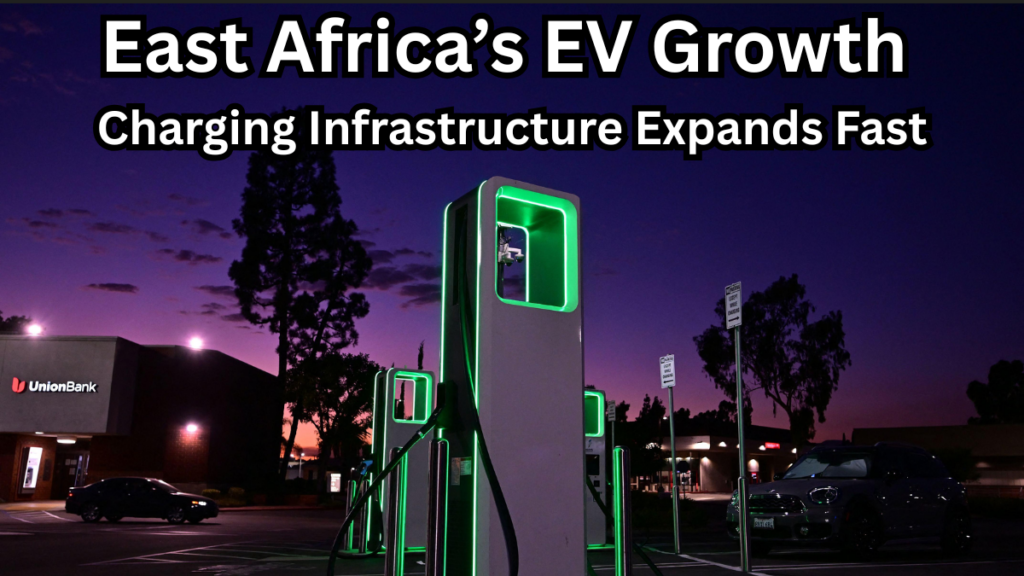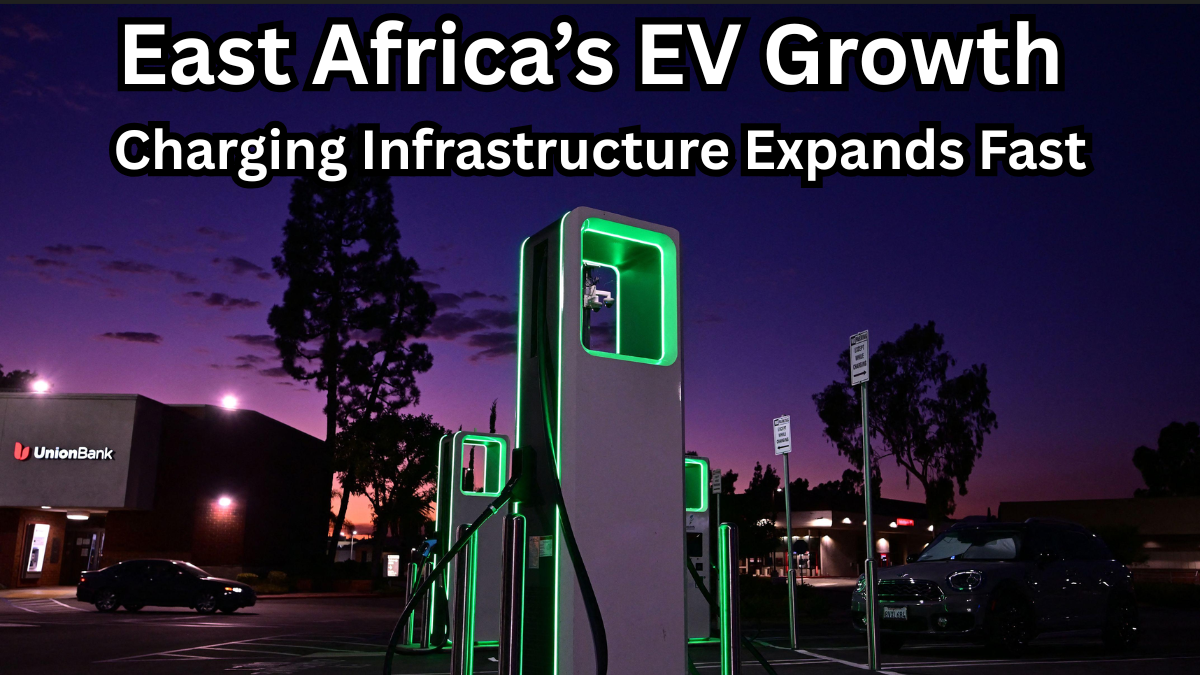Electric vehicles (EVs) are no longer just a trend in East Africa — they are fast becoming a practical solution to urban pollution, rising fuel prices, and the region’s energy transformation. In fact, EV adoption in East Africa 2025 has reached a turning point, thanks to the surge in charging infrastructure across key countries.

What’s Fueling the Rise in EV Adoption?
Several forces are coming together to make EVs more appealing to East African consumers, businesses, and governments.
Key Drivers of Growth
-
High fuel costs: The rising price of imported fuel makes EVs a cost-saving alternative.
-
Climate responsibility: Cleaner mobility options are gaining popularity in pollution-prone cities.
-
Policy support: Incentives like tax waivers, import duty reductions, and registration benefits.
-
Youth-led demand: Tech-savvy and eco-conscious youth are pushing for modern transport solutions.
Country-Wise EV Momentum in 2025
Some East African nations are emerging as early leaders in electric mobility.
| Country | 2025 Developments |
|---|---|
| Kenya | Over 2,000 EVs registered; more than 350 public charging stations operational |
| Rwanda | 90+ battery-swap stations for e-bikes; Kigali pushes green public transport |
| Uganda | Kiira Motors expands local EV bus production |
| Tanzania | EV taxis launched; solar charging hubs tested in Dar es Salaam |
Charging Infrastructure: The Game Changer
For EV adoption in East Africa 2025 to be sustainable, a robust charging infrastructure is essential. The good news? That foundation is already being laid across cities and highways.
Charging Network Highlights
-
Urban expansion: Nairobi, Kampala, and Kigali lead in urban charging point installations.
-
Solar-powered stations: Many new setups are running on clean, renewable energy.
-
Mobile chargers: Vans and pop-up stations fill in where permanent units aren’t yet viable.
-
Battery swaps: Especially popular for electric two- and three-wheelers in Rwanda and Kenya.
Business and Innovation on the Rise
East Africa’s EV transformation is not just about sustainability; it’s opening doors to fresh business ideas and job opportunities.
Growth Opportunities
-
Startup ecosystem: E-bike delivery services, EV taxi fleets, and fleet-as-a-service models.
-
Local assembly: Electric motorcycles and minivans assembled in Kenya and Uganda.
-
Green jobs: EV repair technicians, charging infrastructure operators, and clean energy engineers.
What to Expect by the End of 2025
With momentum building, experts project a solid EV ecosystem in place across the region.
Projected Outcomes
-
Over 50,000 EVs registered across East Africa
-
More than 1,500 charging stations
-
Enhanced cross-border EV-friendly routes and shared infrastructure standards
The future of EV adoption in East Africa 2025 is not just hopeful — it’s rapidly becoming reality.
FAQs
What is driving EV adoption in East Africa in 2025?
Key drivers include high fuel costs, climate concerns, youthful demand, and supportive government policies, along with a fast-developing charging infrastructure.
Which East African countries are leading EV efforts in 2025?
Kenya is taking the lead, followed by Rwanda and Uganda — all showing significant growth in both EV numbers and public charging stations.
Is charging infrastructure available outside major cities?
While urban areas are the primary focus, rural regions are seeing mobile and solar-powered charging options along highways and public transport routes.
Are EVs affordable for the average person in East Africa?
Yes, especially with the rise of locally assembled electric two-wheelers and government-backed incentives that bring down upfront costs.
Click here to learn more
Sachin is a dedicated writer specializing in education, career, and recruitment topics, delivering clear and actionable insights to empower readers.
